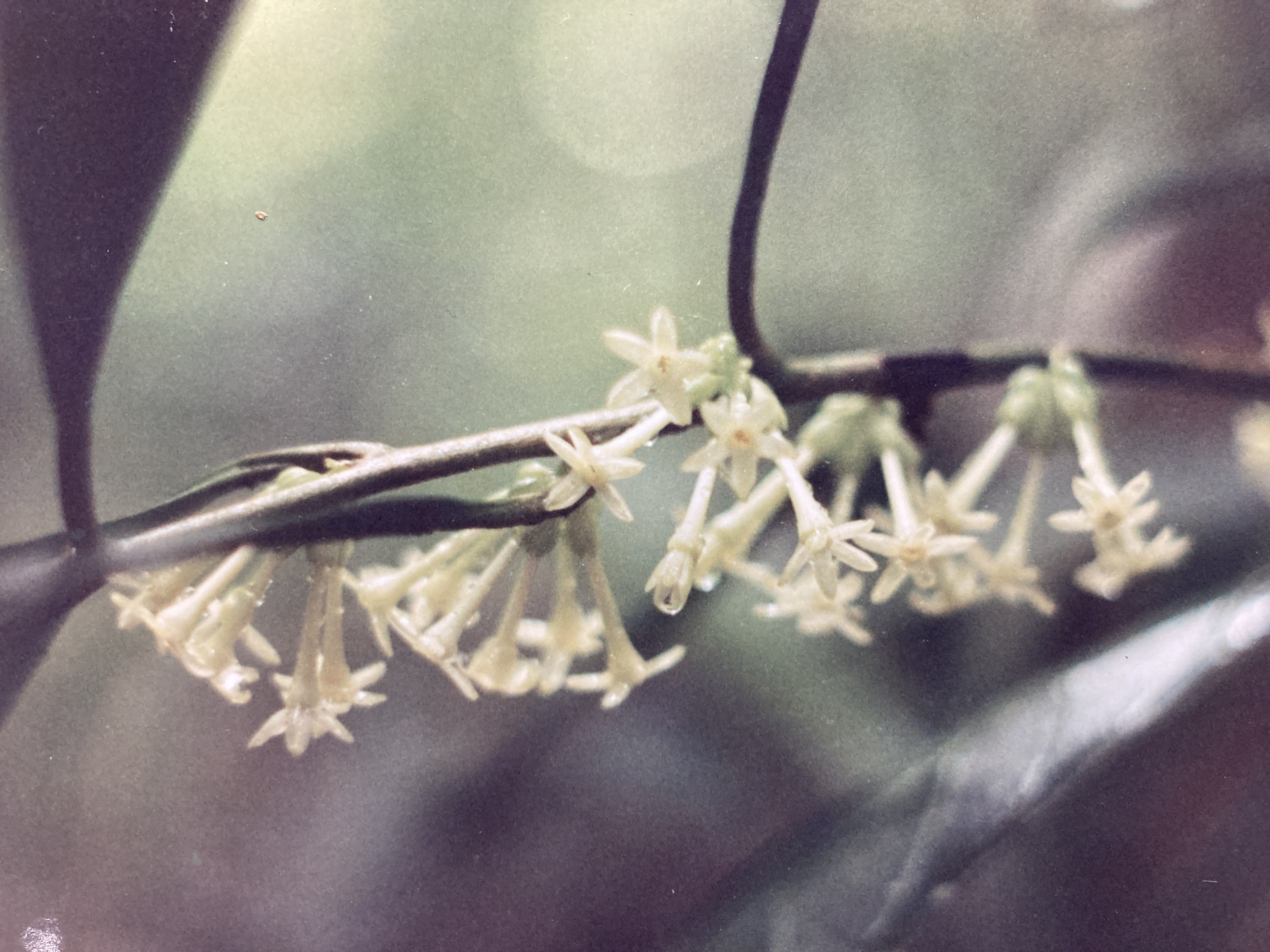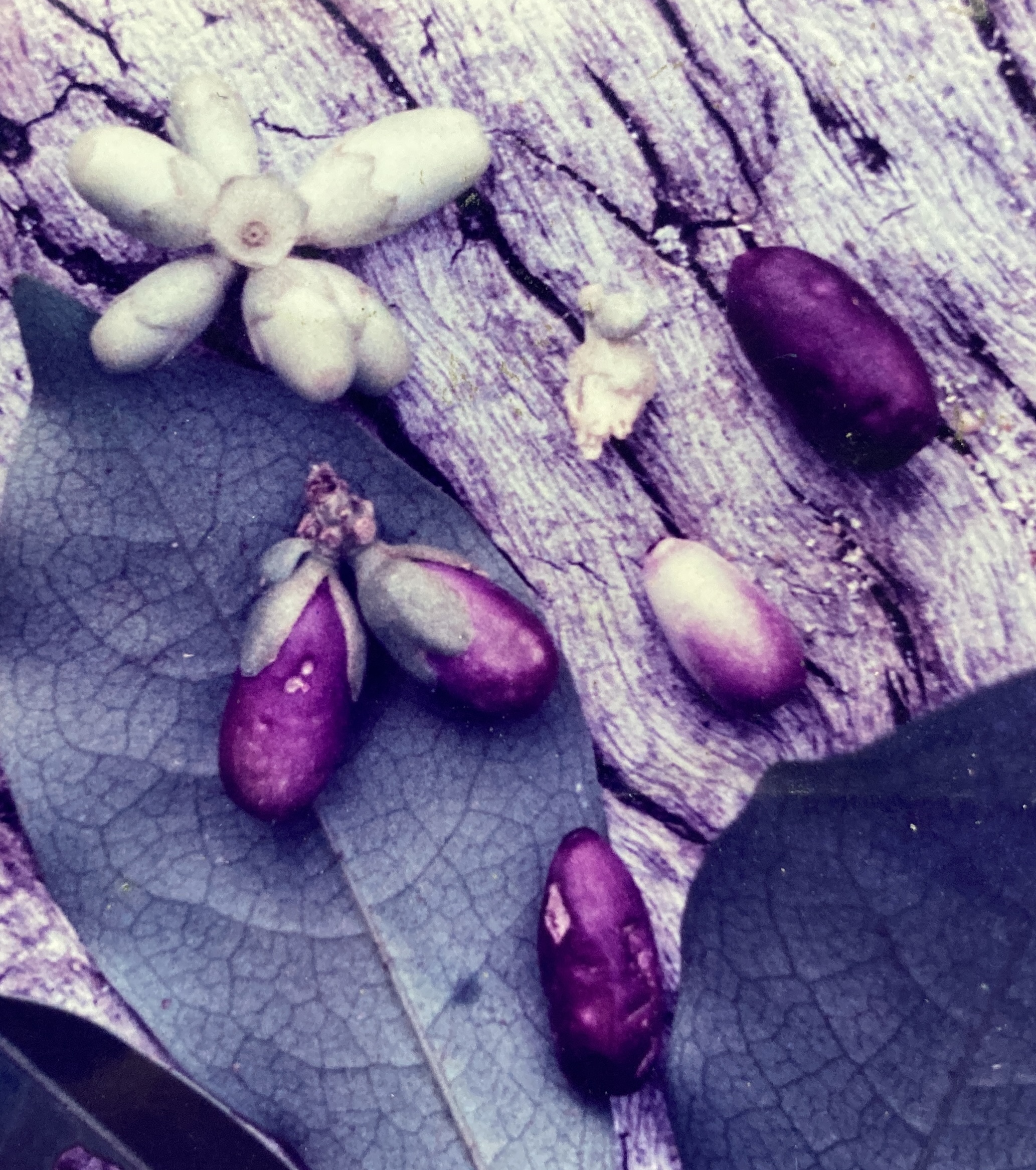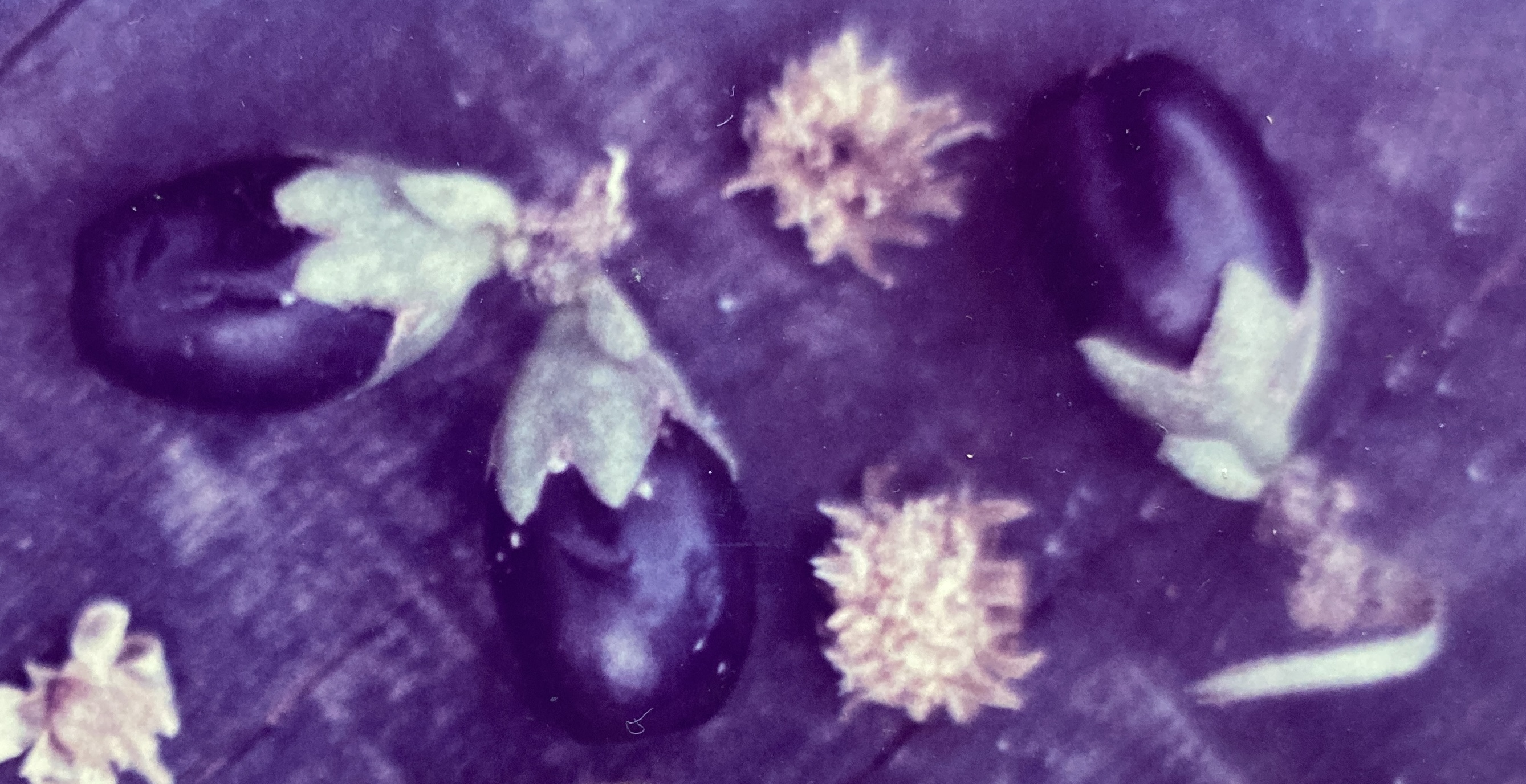Cestrum sp.
Occasional evergreen shrub or treelet (2-3 m) found growing amid the shady undergrowth of the deep primary forest. This tree, one of the few representatives of the nightshade (tomato) family to be found in Manuel Antonio National Park (MANP), provides an important source of fruits to forest birds. This small tree has yet to be identified at the species level.
Description: Cestrum has a small trunk that rarely exceeds 5 cm in diameter. It is clad is smooth, gray or creme-colored bark that is punctuated by raised, horizontal lenticels. Composed of few, meager branches, this treelet’s crown is irregular and very open. Cestrum leaves are simple, alternate and variable in size, ranging from 12-17 cm in length and 4-7 cm in width. They are roughly textured, thick, and elliptically shaped, with only poorly developed – sometimes non-existent – drip-tips. The blades are supported by short, dorsally-grooved petioles (1 cm).
Flowers emerge in axillary clusters amid the current foliage, as well as along the inner, bare sections of the branches. A wide, cup-like, green calyx, formed from five fused sepals, dominates the base of each blossom and persists on the branch through harvest. From it, a long, off-white, corolla tube expands rapidly, eventually reaching 2 cm in length. Distally, the narrow corolla divides into five pale petals that open, trumpet fashion, to form star 8 mm in diameter. Five stamens (attached to the corolla) and a central pistil are visible deep inside the neck of the blossom. Flowers appear sporadically, in a series of synchronized bursts, during most years. Though they may occur at any time, blossoms are probably most commonly observed during the mid to late rainy season months of July through December. Flowers are scarce during the dry season.
Fruits develop after the corollas are shed, emerging from the same, large calyxes. During about two months, the green, glossy, ovoid berries grow slowly, finally reaching 1.5-2 cm in length. Resembling miniature eggplants in color and shape, they ripen a deep purple color. Underneath a juicy layer of pulp, each fruit harbors from 1 to 5 elongate, somewhat angular, brown seeds (8 mm by 3 mm). Harvests last longer than the brief (1-2 week) flowering periods and ripe fruits may occur at any time – and on multiple occasions – during the year.
Similar Species: Sterile samples of Cestrum may be difficult to identify, thanks to their lackluster leaves and general want of distinguishing hallmarks. The small stature of this treelet, though helpful, does not serve to differentiate it from the saplings of other, large forest trees. Fortunately, Cestrum is frequently fertile and the large, rounded green calyxes are virtually omnipresent in leaf axils (persisting for some time even after flowers and fruits have been shed). Since the immature saplings of larger trees remain sterile, lack such structures.
Natural History: Cestrum flowers are pollinated by insects. Its fruits are eaten and dispersed by birds of the forest understory.
Distribution: In MANP, Cestrum is found widely, though thinly, distributed in dense primary forests like those of Punta Catedral and Puerto Escondido. It is frequently encountered along trailsides.



